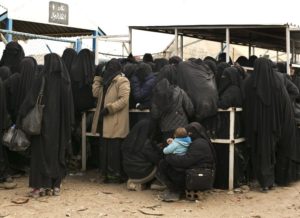Editor’s Note: Mary Mueller is the parent of a student who survived the November 2021 mass shooting at Oxford High School in Michigan. Her sister, Sarah Rogerson, a law professor at Albany Law School in New York, is a community gun violence prevention advocate. The views expressed in this commentary are their own. Read more opinion at CNN.
As sisters, we have shared many things in life, but one thing we never expected to share was the trauma of living through a mass shooting that seriously injured our son and nephew.
On November 30, 2021, a teenaged schoolmate armed with a Sig Sauer semiautomatic handgun purchased for him by his parents, shot Elijah in the face. He survived, but the shooter killed four students and wounded seven other people at Oxford High, the worst school shooting in Michigan’s history.
Overnight, our family joined a tragic affinity group of Americans directly connected in some way to a mass shooting, a group whose number expands year after year.
What has happened since the shooting has been a regular subject of national headlines, including on Tuesday, when the parents of the shooter were sentenced in the case, after being convicted of manslaughter at separate trials. The judge handed down a sentence of 10-15 years in prison, including time served, with 15 years being the maximum allowable under state sentencing guidelines.
It was a historic verdict in which the parents of a mass shooter were held legally responsible, after a first-of-its-kind prosecution under the theory of gross negligence. The teen shooter, meanwhile, who was charged as an adult, pleaded guilty to 24 crimes, including murder and terrorism. He was sentenced in December to life in prison without the possibility for parole.
The convictions of the shooter’s parents, and Tuesday’s sentencing, set a potentially powerful precedent. But they are both too much, and not enough. They’re too much because the systems designed to support parents and teens in crisis failed too, in part, because they are not adequately funded.
And they’re not enough because laying these failures at the feet of the shooter and his parents and removing this family from society does little to incentivize school officials, lawmakers and taxpayers to correct the systemic failures contributing to the behavior being punished. And while there are civil suits against the gun store owners and certain school officials still pending, it is unclear whether that legal action will ultimately provide any remedy in terms of compensation or deterrence.
As relatives whose loved one has suffered harm from gun violence, we have witnessed and been subjected to pressure to seek vengeance and to hate the shooter and his parents. We want to offer a different way forward.
As Christians raised to forgive and extend grace, we feel strongly that the criminal justice system offers incomplete comfort and does little to address root causes of community violence. For even justified and properly achieved convictions to have the highest positive impact, they must be complemented by solutions outside of the criminal justice system.
Although we are angry that the shooter’s parents failed their son in multiple ways and livid that they largely failed to take accountability for their failings, we also still see their humanity. We see parents whose own life dramas and inherently flawed priorities displaced their overarching duties to their son. We also see a child who was failed so many times by so many people that he feels his life is “useless.” No matter your faith or politics, a child spending the rest of his life in confinement is not a complete solution to anything.
Achieving meaningful progress toward the goal of preventing mass shootings and gun-related violence requires that society pay greater attention to evidence-based social science from trusted organizations like The Violence Project, which has exhaustively studied the life histories of mass shooters among other nationwide research on the effects of exposure to gun violence and data-driven strategies to respond to and de-escalate them.
And while many experts agree on the importance of systemic solutions like social-emotional education and violence intervention programs, across the country, our collective conversation on reducing gun violence is dominated by security culture and carceral solutions that displace resources that could be used to support more effective violence reduction programs.
With the numbers of mass shootings climbing every year, gun violence reduction at the community level seems an uphill battle. There are steps, however, that we can take at the individual level.
Securing firearms has proven effective to reduce not only mass violence, but other shootings, which are the leading cause of death for children and teens. (Secure gun storage can also reduce the number of gun-involved suicides.) This simple solution hits close to home: We know that the parents of the school shooter in Oxford claimed to have stored the firearm used in the incident safely, but the passcode on the device was 0-0-0 — the default combination set by the manufacturer, according to the detective who testified at the trial of the shooter’s father.
At the school and community level, robust interdisciplinary threat assessment teams should be created in every county in every state, offering a multi-pronged approach to prevent future harm. These units could encompass mental health concerns in concert with community partners in education and law enforcement, as well as social work professionals to identify potential threats to the community and find constructive interventions.
Such threat assessment teams can also suggest restorative justice-based intervention strategies for people who have perpetrated or might be susceptible to perpetrating harm. When properly implemented, restorative justice methodologies have proven to be effective in improving school climates and reducing student misbehavior. It’s an approach focused on accountability for one’s actions, promoting students’ social-emotional growth, and supporting and reinforcing positive behaviors in schools.
At least one other parent of a survivor of the shooting in Oxford joined a threat assessment team at her workplace in a neighboring school district and lamented the missed opportunity that properly implemented threat assessment teams can offer.
An independent investigation conducted after the shooting concluded that had proper threat assessment guidelines been in place, the shooting tragedy might have been avoided. The 572-page report investigating the shooting concluded that the school district should have conducted an assessment of the potential threat posed by the gunman on the day of the shooting.
We think that it’s also important to place less emphasis on solutions that at best, deliver mixed results. It’s very tempting to lean into the promises marketed by security companies making a profit from our fear. Metal detectors, expensive bulletproof glass and clear backpacks may provide a veneer of security for some, but they’re far from sufficient. We need to join with others who are advocating for additional financial support for the public school system that shoulders the burden of gaps in the social safety net.
We didn’t ask to have this platform. Now that we are here, we hope to work with others to slow the numbers of families who join us and other survivors every day. But we simply cannot prosecute our way out of community violence in an overburdened and expensive criminal justice system that disproportionately targets communities of color.
A verdict might make another parent think twice about their personal firearm safety practices or their child’s mental health and well-being, but it’s a peer, friend or family member who can provide the accountability to turn thought into preventative action.
Together we can do what the criminal justice system cannot; we can educate each other, support each other and hold each other accountable as family members and as a community to prevent community gun violence.
We possess the tools to create meaningful and lasting change and healing after the pain and loss of gun violence, no matter how steep the climb or how heavy the task.




